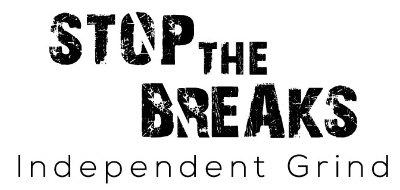
Music is nothing more than sound waves of various frequencies that our brains can translate into patterns. If our brains couldn’t do that, all you’d hear is noise. And that’s what’s at the base of our relationship with music—having brains with the ability to pick up on patterns from tone, frequency, and rhythms while enjoying the experience.
We’re a highly social species, and on our evolutionary path, we kept trying to find ways to express our feelings to each other despite language limitations. One of those ways is creating music and dancing to it.
Music connects people of different cultures and languages, and it’s a way for us to bond with our communities. It’s something we all share because it’s ultimately a language of emotion.
But how can a combination of sounds of various frequencies make us cry or give us goosebumps?
Throughout the twentieth century, music psychologists have conducted a variety of fascinating investigations on how our brains and bodies respond to music.
Your Brain on Music
When comparing the evolved brains of Homo sapiens to those of the great apes, one of the most noticeable differences is the increased area assigned to processing auditory information.
The size of the visual cortex in other primates correlates well with brain size and is lower in Homo sapiens. In contrast, we see other regions of the human brain have grown in size, most notably the temporal lobes, particularly the dorsal portion associated with the auditory reception of speech. This signals a shift toward a sound-based aesthetic.
The voice was the first musical instrument our ancestors used. Unlike the eyes, the ears are always open, and sound cannot be easily avoided, which means that as human babies grow and their brains develop, they’re always surrounded by sound and rhythm like the sounds from nature or their mother’s voice. They learn to distinguish and organize these patterns.
The relevance of the right (non-dominant) hemisphere is an important finding from research on the impact of music on the brain. Brain imaging studies have shown that this hemisphere gets stimulated when listening to music or just imagining music. We also know that cerebral damage in this region can cause impairments in our abilities to find patterns in pitch, timbre, and rhythm.
Despite popular belief, the functions of the human brain are not neatly divided between the left and right hemispheres, and that’s not what the study suggests. Still, it does show that the talents of the non-dominant (typically right) hemisphere warrant further investigations. Traditional neurology has largely favored the dominant hemisphere because of its role in propositional language, but the emotional intonations of speech are just as important to our ability to communicate and form bonds with each other.
The connection between music and emotion appears to have been universally understood, and Plato wrote about how different styles of music evoked different emotions. This is something you probably already know from personal experience. You perceive major chords joyful and minor ones as sad. Similarly, slower music feels less joyful than music played at a faster rhythm.
Chemical Reactions
To truly understand the link between music and our emotions, we need to learn about the chemical reactions that take place in our brains.
When music is played, our brains release two main chemicals: dopamine and serotonin. Dopamine is synthesized from the amino acids tyrosine and phenylalanine, which are found in protein-rich foods. Serotonin is made from tryptophan, an essential amino acid found in foods like red meat, cheese, and nuts.
We get tyrosine, phenylalanine, and tryptophan from various foods in our diets and our bodies convert them to dopamine and serotonin. To make dopamine, tyrosine is converted into dopa and then to dopamine. To make serotonin from tryptophan, the body uses an enzyme called tryptophan hydroxylase.
Studies show that our bodies produce more dopamine and serotonin in response to the music we enjoy. Since dopamine is linked to our brains’ reward system, we get a burst of chemical pleasure when we anticipate a musical pattern we like. It’s perceived as a subtle feeling of serenity and happiness.
Dopamine is also involved in the learning process and in addiction. We’ve evolved to want to repeat behaviors that trigger a release of dopamine in our brains, so if a certain pattern of sounds made you get that feeling of chemical pleasure, you will keep searching for it, and this is how you form your music preferences and why you keep playing the same song on repeat.
Listening to music has also been shown to decrease cortisol levels – the “stress hormone” – and increase oxytocin levels – the “love hormone” that triggers a feeling of closeness and plays an important role in the female reproductive system, which might explain why music is involved in human mating rituals.
Music Therapy
Our response to music is universal since it’s ingrained in our evolutionary development, suggesting that it can be used as therapy since it stimulates the brain and produces emotional changes.
Studies have demonstrated that rhythmic entrainment of motor function can help individuals with stroke, Parkinson’s disease, cerebral palsy, and traumatic brain damage recover their mobility. Furthermore, neuronal memory traces produced through music appear to be profoundly embedded and more resistant to neurodegenerative effects, so music therapy can also be beneficial for people with memory disorders such as Alzheimer’s disease.
Individual randomized trials have found that people with depression respond to music therapy and that it improves symptoms of mood disorders.
Music also benefits people suffering from epilepsy since it can help regulate electroencephalographic abnormalities, reducing electroencephalographic spike frequency and increasing the interval between seizures.
Music therapy is highly customizable, making it appropriate for people of all ages, including very young children. Since it’s so versatile, programs can be developed for patients with various health challenges regardless of their musical expertise.
The main benefits of music therapy are:
- Stimulate positive feelings like calmness and emotional intimacy
- Release endorphins
- Lower heart rate and blood pressure
- Reduce muscle tension
- Relieve stress
- Stimulate regions of the brain that play a role in memory, movement, sensory relay, emotional regulation, and decision-making
- Facilitate the fulfillment of social needs in group settings.



